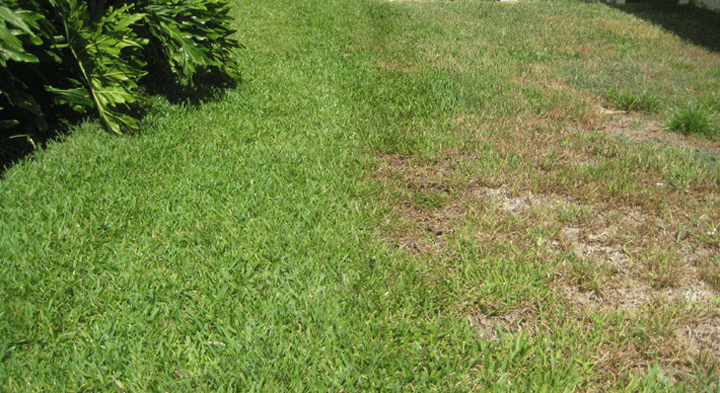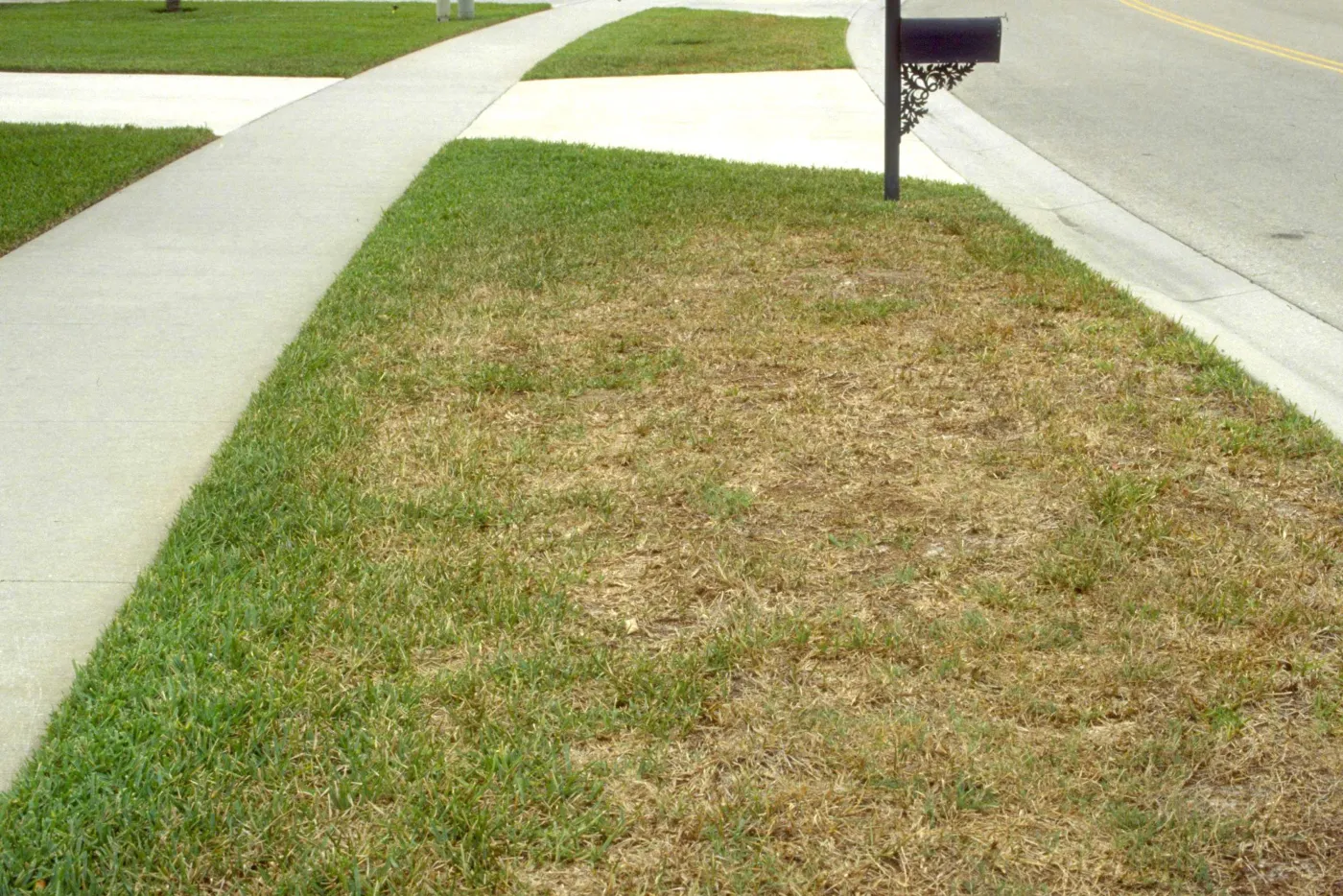From May until the cooler weather of October is officially Gainesville's Chinch Bug Season – the most dangerous season for your St Augustine lawn. Why? First, Chinch Bugs like it hot and dry – or at least they like their St Augustine turf hot and dry. Nothing is more inviting to a chinch bug than St Augustine grass dry from the lack of irrigation and baked all day under the hot Gainesville, Florida sun. Second, Chinch Bug damage is so complete and so fatal to St Augustine turf grass that there is no recovery – your lawn is officially dead! So what are Chinch Bugs? and how do you prevent Chinch Bugs from destroying your beautiful Gainesville lawn?
WHAT ARE CHINCH BUGS?
Chinch Bugs are not only lawn pests, they are predators. Their prey is weak, suffering St Augustine turf grass – preferably St Augustine turf grass that is weak and suffering from drought stress. As a predator, their role is to remove the weak to make room for the strong. In a lawn that means destroying the struggling St Augustine grass and allow for stronger weedy species like Wild Bermuda grass and crabgrass to establish and prevail. The only problem with that is that Wild Bermuda and Crabgrass weeds are so hideous in your lawn.
CHINCH BUGS ARE SMALL BUT ALWAYS PRESENT
Chinch Bugs are small! They are about the size of a ball point pen head. They are very difficult to observe in a lawn. But they are there – almost every St Augustine turf grass lawn in Gainesville, Florida has at least a few Chinch Bugs in or near the lawn. And when conditions are good, the population can rapidly expand to thousands.
CHINCH BUGS FEED ON SAP AND PREPARE THE NEXT MEAL
Chinch Bugs feed on the sap of St Augustine turf grass and also inject a toxin that prevents the movement of water in the plant. It is an especially dangerous one-two punch for your St Augustine lawn – less sap and less water. Plus the Chinch bug is not only getting food, they are creating the next meal of hot dry St Augustine turf grass.
CHINCH BUG LIFE CYCLE: MORE CHINCH BUGS MORE FOOD
So what is created is a fire storm of activity – well-fed chinch bugs are more fertile and create more chinch bugs, and more chinch bugs create more dead grass quicker – it is a logarithmic expansion of predator and prey. This all started when your St Augustine turf grass lawn was allowed to suffer drought-stress and become weak.
st. johns water management district AND CHINCH BUGS
The obvious solution is prevent drought-stress. But, that requires the freedom to water as often and as much as weather, soils, exposure and other conditions dictate. But the SJWMD has removed that freedom and required irrigation systems only be used on a certain days – regardless of when the lawn needs water. The consequences from such restrictions is more drought-stressed St Augustine turf grass, which of course gives us more Chinch bugs. This creates a desperate need for a Lawn Fertilization and Pest Control Program.
 Insecticides applied Properly will Protect St Augustine Turf From Gainesville Chinch Bugs. The Turf on the left was sprayed regularly to prevent Chinch bugs - the right side is untreated.
Insecticides applied Properly will Protect St Augustine Turf From Gainesville Chinch Bugs. The Turf on the left was sprayed regularly to prevent Chinch bugs - the right side is untreated.
WHAT TO LOOK FOR
Chinch bug damage mimics heat and water stress. However, there are three distinct symptoms that differ from having a simple drought stressed lawn:
- Incomplete Damage – the damage seems to be selective in contrast to drought-stress damage that is equal damage over the area. Look for islands of green isolated within the damaged area. This is because the Chinch bug will feed on the weak turf first, and then attack the healthy grass last.
- Yellow Leaves along the edges of the damage caused by the injection of the toxin. The feeding progresses from a central point and moves outward. The pattern will be dead grass ----> yellow leaves on the edges ----> healthy turf.
- The presence of Chinch Bugs – If you cannot find any Chinch Bugs then either something else caused the damage or you don't know how to look for them. Finding the small match-head sized bugs can be difficult. Soap drenches or physically investigating the edges of undamaged turf is the best method to get a visual verification.
Warning: Chinch bugs are predators and are often a secondary causal agent. A turf damaged by drought stress, herbicides, or other stressors will be attacked by Chinch bugs first. Our goal is to cure the cause of the stress and regardless of the primary cause, control the Chinch bugs at the same time.
PREVENTION AND CURE
The good news is that Chinch Bug populations are easily reduced with modern and safe insecticides. Since the Chinch bugs live in the base of the leaves, using a liquid insecticide is superior to granular insecticides, commonly sold at local stores. Remember that Chinch Bug activity is so lethal, the lawn will not recover and will have to be replaced with new sod if left to fight the Chinch Bugs without help.
Therefore, preventive Gainesville lawn applications during the peak seasons is better than curative applications. Preventative Insecticide applications every 6-8 weeks during Chinch Bug season will protect your lawn, just as it did in the photo above.
IN SUMMARY
Chinch bugs are here; they are not easily seen but are an ever present danger to your lawn. Chinch bugs are not pests; they are predators, preying on weak stressed turf. Chinch bug damage is so complete that the turf does not recover. It is imperative to take care not to allow Chinch Bugs to expand their populations to damaging levels. Therefore keep your turf healthy with proper sprinkler / irrigation as often as you can and mow your turf as high as the mower will go (yes tall turf is not appetizing to Chinch Bugs). and reduce Chinch Bug populations with a modern insecticide every 6-8 weeks.


